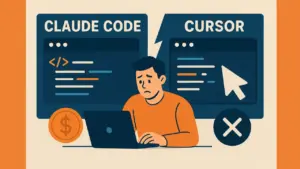Introduction
What if 95% of your code was written by AI, and 90% of that code either slowed your system or introduced bugs? That’s not a hypothetical. It’s a real scenario unfolding at some of the world’s biggest companies and the most promising startups.
AI-generated code is on the rise. Microsoft now uses AI for 25% of its codebase. Google has hit 30%. Many startups rely on AI for up to 95% of their code. On the surface, this seems like innovation. But beneath it lies a silent, growing crisis: performance degradation.
A recent study by CodeFlash analyzed 100,000 open source functions. The findings were alarming. Over 60% of AI-generated code had bugs. Even worse, most AI optimizations either had no effect or made things slower.
This blog explores the dangerous performance debt AI-generated code is creating—and why it’s a wake-up call for every tech leader.
1. The AI Coding Boom—and the Blind Spots
Developers and companies are embracing AI coding tools at unprecedented rates. Copilot, ChatGPT, and other tools are now writing significant chunks of software.
The appeal is clear: speed, convenience, and automation. AI can churn out thousands of lines of code in minutes. But here’s the catch: these models are trained to produce working code, not optimal code.
Large Language Models (LLMs) prioritize functionality over performance. If the code compiles and runs, the job is done. But performance, scalability, and maintainability? Those are afterthoughts—if they’re considered at all.
That’s where the cracks begin to show.
2. CodeFlash’s Findings: Numbers That Should Terrify Every CTO
At the Infobip Shift Conference, Saurabh Misra from CodeFlash revealed shocking results.
They studied 100,000 open-source functions generated or optimized by AI. The goal? To see how AI handles performance.
The outcome:
- 62% of AI “optimizations” introduced bugs that would break production systems.
- Of the remaining 38%, most delivered less than a 5% performance improvement.
- In many cases, these optimizations made the code slower.
That means 90% of AI-generated code changes were either broken or ineffective.
This isn’t just about technical flaws. It’s about trust. If your dev team integrates AI suggestions without deep review, they might be planting bugs or bottlenecks.
3. The Performance Debt No One Is Talking About
There’s a hidden cost to using AI-generated code: performance debt. Like technical debt, it’s the gap between working code and well-performing code.
Most AI-generated code is never benchmarked. It’s assumed to be “good enough.” But in reality, it’s often bloated, inefficient, and poorly optimized.
The danger? Performance issues don’t always show up immediately. They surface at scale—during traffic spikes, user growth, or data-heavy operations.
By then, it’s too late. Refactoring becomes expensive, time-consuming, and risky.
Companies are unknowingly stacking performance debt with every AI-written line. They’re building beautiful systems on shaky foundations.
4. Real-World Implications: When AI Kills Competitive Advantage
Performance isn’t a luxury. It’s a core feature, especially for startups.
When I built CleanRouter, every millisecond mattered. We filtered content in real time. A slight delay meant user dissatisfaction and revenue loss. If we had relied on AI-generated code, we would have lost our edge.
AI doesn’t understand business context. It doesn’t know which parts of your system need to be lightning fast. It can’t prioritize performance-critical code.
That’s why blindly trusting AI can backfire. You may think you’re saving time. But in reality, you could be compromising the very feature that sets you apart.
5. Why Developers Who Understand Optimization Are More Valuable Than Ever
Many believe AI will replace developers. But the opposite is happening.
As AI takes over boilerplate tasks, the demand for performance-savvy developers is rising. These professionals know how to:
- Profile systems
- Analyze performance bottlenecks
- Optimize for speed and scalability
- Benchmark changes accurately
They don’t just write code. They write smart code.
In a world flooded with mediocre AI output, the developer who can fine-tune performance becomes invaluable.
AI is a tool. But human expertise is the multiplier.
6. What CTOs, Founders, and Engineers Need to Do Now
If you’re using AI to write code, don’t panic—but do act.
Here’s how to reduce risk:
- Build a performance-first culture. Make performance reviews part of your development cycle.
- Never trust AI blindly. Always test and benchmark AI suggestions.
- Invest in performance tooling. Use profilers, linters, and test suites to catch issues early.
- Upskill your team. Train developers on performance best practices.
- Identify performance-critical areas. Focus human review and testing where it matters most.
The goal isn’t to stop using AI. It’s to use it wisely.

Conclusion
AI-generated code is changing how we build software. But it’s not a silver bullet. Beneath the surface lies a growing mountain of performance debt.
Microsoft, Google, and startups everywhere are unknowingly stacking millions of inefficient lines of code. This won’t crash systems today. But it will create nightmares tomorrow.
Now is the time to act. Audit your AI-generated code. Benchmark relentlessly. And most importantly, empower your developers to do what AI can’t: optimize for the real world.
Because at StartupHakk, we believe the future belongs to those who build not just fast—but smart.




